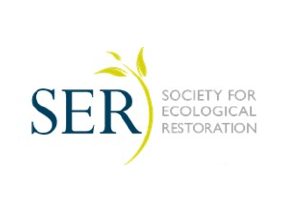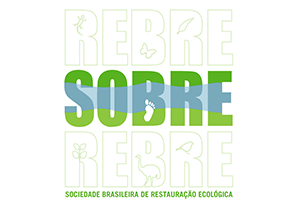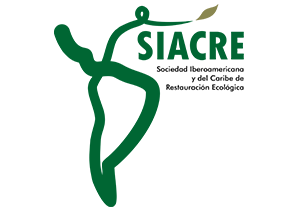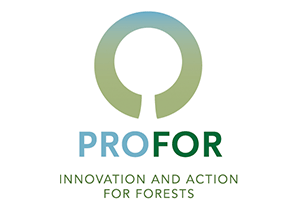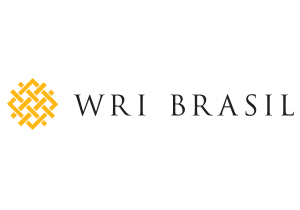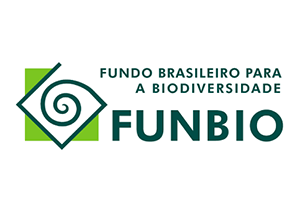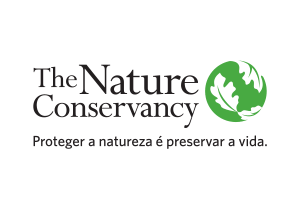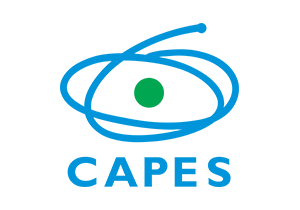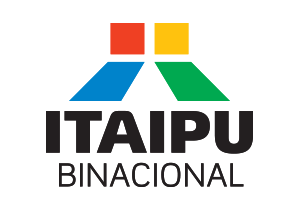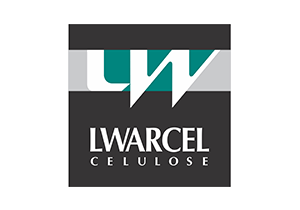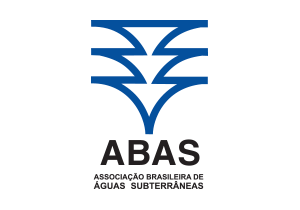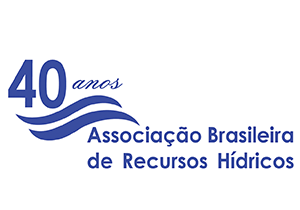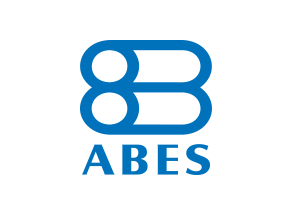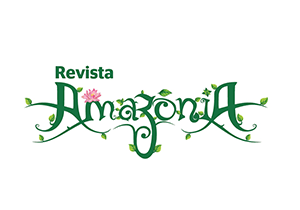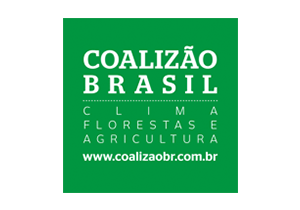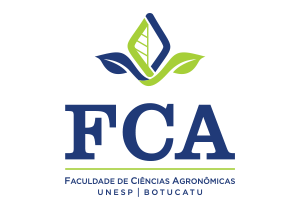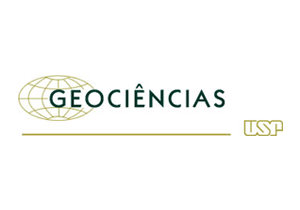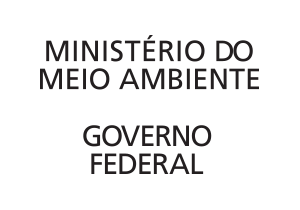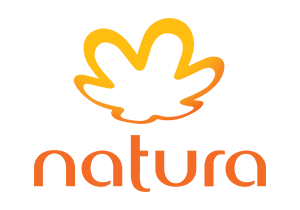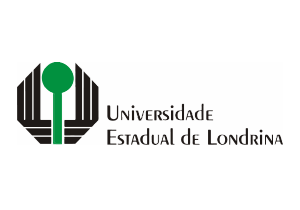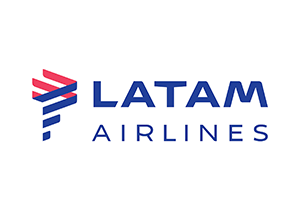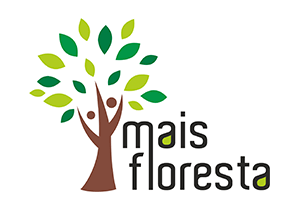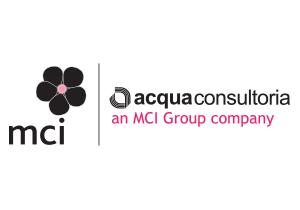Useful resources
- Best Non Gamstop Casinos Uk
- Casino Non Aams
- Casino Sites Not On Gamstop
- Melhores Casinos Online
- Bitcoin Casinos
- Casino Sites Not On Gamstop
- Non Gamstop Casino Sites UK
- Non Gamstop Casino UK
- Non Gamstop Casinos
- Non Gamstop Betting Sites
- Online Casino
- Non Gamstop Casino Sites UK
- オンラインカジノ
- Casino Not On Gamstop
- Casino Not On Gamstop
- Non Gamstop Casinos UK
- Casino En Ligne France
- Non Gamstop Casino Sites UK
- UK Online Casinos Not On Gamstop
- Casinos Not On Gamstop
- Best Betting Sites Not On Gamstop
- Siti Casino Online Non Aams
- UK Casino Sites Not On Gamstop
- UK Casino Not On Gamstop
- Casino Non Aams
- Top 10 Casino En Ligne Belgique
VII Conferencia en Restauración Ecológica
V Congreso Iberoamericano y del Caribe de Restauración Ecológica
I Conferência Brasileira de Restauração Ecológica
Foz de Iguazú, Brasil | 27 de agosto al 1º de septiembre de 2017
- Evento
- Programación
- Cronograma Preliminar
- Libro de resúmenes
- Presentaciones orales
- Presentaciones de posters
- Información para presentadores
- Conferencistas
- Temas
- Presentación de resúmenes (cerrado)
- Convocatoria para propuestas (cerrado)
- Cursos
- Salidas de campo durante la Conferencia
- Salidas de campo pre la Conferencia
- Salidas de campo pos la Conferencia
- Participe
- Hoteles & Viaje Aéreo
- Información práctica
- Patrocinadores y Expositores
- Difundir la SER 2017
- Evento
- Programación
- Cronograma Preliminar
- Libro de resúmenes
- Presentaciones orales
- Presentaciones de posters
- Información para presentadores
- Conferencistas
- Temas
- Presentación de resúmenes (cerrado)
- Convocatoria para propuestas (cerrado)
- Cursos
- Salidas de campo durante la Conferencia
- Salidas de campo pre la Conferencia
- Salidas de campo pos la Conferencia
- Participe
- Hoteles & Viaje Aéreo
- Información práctica
- Patrocinadores y Expositores
- Difundir la SER 2017
Salidas de campo durante la Conferencia
Haga clic aquí para registrarseGENERAL INFORMATION:
We are working hard to provide you a nice field experience. Please pay attention to the below tips and do not hesitate in contacting us if you have any questions or special needs. Foz do Iguassu is an average size city where it is easy to find things like repellent, caps, t-shirts, footwear, etc. in case you forget something.
- All trips will involve some walking on wild trails, so be aware about footwear. Foz do Iguassu region has clayey red-colored soils which are very sticky, so consider carrying sandals or flipflops in a plastic bag, just to wear them after the trip and then put your boots in the bag when returning to the hotel.
- Use light, loose-fitting trousers and preferable long-sleeved shirts (avoid dark colors). Hats or caps are also recommended.
- Although the conference will be held at the end of the winter (cooler and dryer season), the climate is usually warm and humid. Lightweight and compact rain gear is welcome.
- For the same reason, we also recommend carrying a bottle of water even where food and beverage is provided by trip organizers.
Sunscreen and insect repellent is highly recommended.
** IMPORTANT: If the field trips do not meet the minimum number of participants established in each option, the Organizing Committee reserves the right to cancel the activity and will arrange a refund of the full amount of the registration made.
*** If your field trip is appearing as cancelled below, the executive secretariat will contact you. If you have any doubt, please contact us by [email protected].
FIELD TRIP IC 01
Bela Vista Refuge - Restoration
G1 (English)
Itaipu maintains eight reserves and biological sanctuaries in Brazil and Paraguay. These protected areas, which include native forests and restored sites, add to the reservoir's protection range of more than 100,000 hectares and constitute one of the world’s largest forest restoration projects, which has been active since the 1970s.
In Brazil, the Bela Vista Refuge, near the site of the dam, is home to regional biodiversity conservation initiatives. The visit starts at the Visitor Reception Center, a building conceived within the concepts of green architecture, where the actions of environmental education and sustainable tourism take place.
From this starting point, it will be possible to walk along the Trail of the Senses, amidst the forest and restoration sites, and visit the seed laboratory and the forest nursery where seedlings of more than one hundred native species are produced.
Date: August 30th
Departure time: 7:30 a.m / Return time: 11:30 a.m.
Facilities: Transportation and food included.
Minimum: 20 participants
Maximum: 80 participants
Registration fee: US$ 50.00
FIELD TRIP IC 02
Bela Vista Refuge - Restoration
G2 (Portuguese) CANCELLED
Itaipu maintains eight reserves and biological sanctuaries in Brazil and Paraguay. These protected areas, which include native forests and restored sites, add to the reservoir's protection range of more than 100.000 hectares and constitute one of the world’s largest forest restoration projects, which has been active since the 1970s.
In Brazil, the Bela Vista Refuge, near the site of the dam, is home to regional biodiversity conservation initiatives. The visit starts at the Visitor Reception Center, a building conceived within the concepts of green architecture, where the actions of environmental education and sustainable tourism take place.
From this starting point, it will be possible to walk along the Trail of the Senses, amidst the forest and restoration sites, and visit the seed laboratory and the forest nursery where seedlings of more than one hundred native species are produced.
Date: August 30th
Departure time: 01:30 p.m. / Return time: 05:30 p.m.
Facilities: Transportation and food included.
Minimum: 20 participants
Maximum: 80 participants
Registration fee: US$ 50.00
FIELD TRIP IC 03 + FIELD TRIP IC 04 (will happen together)
Bela Vista Refuge 2 – Zoo Complex + Bela Vista Refuge 3 – Spawning channel
The Bela Vista Refuge has several facilities for wildlife conservation and management. The wild animal nursery (CASIB) is home to more than 160 animals from 32 species, with a focus on the reproduction of endangered species including the small forest cat (Leopardus tigrinus), the maracajá cat (Leopardus wiedii), the ocelot (Leopardus pardalis) and the jaguar (Panthera onca). The most successful breeding initiative in the south of the country occurs here, for the harpy eagle (Harpya harpyja), the world's largest bird of prey.
We will visit the Roberto Ribas Lange Zoo, where the enclosures have been designed to house the native animals of the region, according to the physical needs of each species. On the Animals Trail, we will explore themes related to local ecological processes, including the food chain, habitat dynamics, species’ behavior, and extinction.
The third point to visit is the veterinary hospital where the care of the animals kept in Itaipu’s facilities is carried out, as well as the rehabilitation of wild animals found injured in the region. Every year the hospital receives veterinary students for training and a variety of scientific research endeavors.
The Itaipu dam no longer represents a major obstacle to fish migration on the Paraná River. Since December 2002, a man-made waterway connects the reservoir to the river, downstream from the power plant. The Spawning Channel uses a stretch of the Bela Vista River bed to overcome the average 120 meter difference in level existing between the Paraná River and the reservoir surface.
At 10 km long, the Spawning Channel allows migrating fish to reach reproduction and nursery areas upstream from the power plant during the spawning period and swim back in the fall and winter, the time of trophic migration to feeding areas. We will visit points along the Spawning Channel to see how this innovative feature is helping to reduce the impact of the dam on native fish.
Date: August 30th
Departure time: 7:30 a.m. / Return time: 13:00 a.m.
Facilities: Transportation and food included.
Minimum: 15 participants
Maximum: 30 participants
Registration fee: US$ 60.00
FIELD TRIP IC 05
Cultivando Água Boa Project
Cultivando Água Boa (literally, “Cultivating Good Water”) is the socio-environmental program of Itaipu developed in partnership with local actors in 29 municipalities within Paraná Basin 3 (the area of the Paraná River basin directly connected to the hydroelectric reservoir). In 2015, it received the UN 'Water for Life' award as the best environmental conservation initiative.
Ecological restoration along riverbanks, adaptation of rural roads, soil conservation, and recycling are some of the activities carried out under this program, in partnership with municipalities and local communities.
Organic farming is also one of the encouraged practices in the region, where small farmers can convert their holdings to organic production without the use of pesticides or chemical fertilizers, thus preventing the contamination of rivers and offering healthier products to the population.
Date: August 30th
Departure time: 7:30 a.m. / Return time: 6:30 p.m.
Facilities: Transportation and food (lunch at the organic farm) included.
Minimum: 20 participants
Maximum: 30 participants
Registration fee: US$ 80.00
FIELD TRIP IC 06
Itaipu dam - Forest restoration
G1 (English) SOLD OUT
Itaipu maintains eight reserves and biological refuges in Brazil and Paraguay. These protected areas, which include native forests and reforestation sites, add to the reservoir's protection range of more than 100.000 hectares and constitute one of the world’s largest forest restoration projects, which has been active since the 1970s.
More than 23 million seedlings were planted between native and exotic species in the protection range, promoting important ecosystem services such as the protection of the banks of the reservoir and the annual sequestering of 2 thousand tons of CO2.
This environmental heritage is located between the Iguaçu National Park and Ilha Grande National Park, making up the Paraná River Biodiversity Corridor, a rich ecosystem with great biological diversity.
The starting point for this visit is the boat launch (kattamaran) at the hydroelectric reservoir, with a scheduled stop at a leisure area (multiple uses) and then continuing by land to reach restoration sites of different ages and areas where exotic species have been managed.
Date: August 30th
Departure time: 7:30 am. / Return time: 5:30 p.m.
Facilities: Transportation and lunch are included.
Minimum: 20 participants
Maximum: 30 participants
Registration fee: US$ 80.00
FIELD TRIP IC 07
Itaipu dam - Forest restoration
G2 (Portuguese)
Itaipu maintains eight reserves and biological refuges in Brazil and Paraguay. These protected areas, which include native forests and reforestation sites, add to the reservoir's protection range of more than 100.000 hectares and constitute one of the world’s largest forest restoration projects, which has been active since the 1970s.
More than 23 million seedlings were planted between native and exotic species in the protection range, promoting important ecosystem services, such as the protection of the banks of the reservoir and the annual sequestering of 2 thousand tons of CO2.
This environmental heritage is located between the Iguaçu National Park and Ilha Grande National Park, making up the Paraná River Biodiversity Corridor, a rich ecosystem with great biological diversity.
The starting point for this visit is the boat launch (kattamaran) at the hydroelectric reservoir, with a scheduled stop at a leisure area (multiple uses) and then continuing by land to reach restoration sites of different ages and areas where exotic species have been managed.
Date: August 30th
Departure time: 7:30 am. / Return time: 5:30 p.m.
Facilities: Transportation and lunch are included.
Minimum: 20 participants
Maximum: 30 participants
Registration fee: US$ 80.00
FIELD TRIP IC 08
Itaipu dam - reservoir socioeconomic
G1 (English) CANCELLED
In 1999, a technical committee comprised of representatives from Itaipu and government environmental agencies was created to oversee uses and activities in the Reservoir of the Hydroelectric Power Plant and its protection range. This initiative arose from the understanding that only by bringing together all of the entities with a stake in the region’s conservation actions would local communities fully commit to protecting the area’s natural resources.
Among the area’s permitted uses are for public water supply, public leisure activities, ports for boats, and ports for landing sand, as well as colonies for artisanal fishermen and aquaculture practice, and corridors for animal watering.
The starting point for this visit is the boat launch (kattamaran) at the hydroelectric reservoir, with a scheduled stop at a leisure area and then continuing by land to reach sites of multiple uses, including restoration sites with different ages.
Date: August 30th
Departure time: 7:30 am. / Return time: 5:30 p.m.
Facilities: Transportation and lunch are included.
Minimum: 20 participants
Maximum: 30 participants
Registration fee: US$ 80.00
FIELD TRIP IC 09
Itaipu dam - reservoir socioeconomic
G2 (Portuguese) CANCELLED
In 1999, a technical committee comprised of representatives from Itaipu and government environmental agencies was created to oversee uses and activities in the Reservoir of the Hydroelectric Power Plant and its protection range. This initiative arose from the understanding that only by bringing together all of the entities with a stake in the region’s conservation actions would local communities fully commit to protecting the area’s natural resources.
Among the area’s permitted uses are for public water supply, public leisure activities, ports for boats, and ports for landing sand, as well as colonies for artisanal fishermen and aquaculture practice, and corridors for animal watering.
The starting point for this visit is the boat launch (kattamaran) at the hydroelectric reservoir, with a scheduled stop at a leisure area and then continuing by land to reach sites of multiple uses, including restoration sites with different ages.
Date: August 30th
Departure time: 7:30 am. / Return time: 5:30 p.m.
Facilities: Transportation and lunch are included.
Minimum: 20 participants
Maximum: 30 participants
Registration fee: US$ 80.00
FIELD TRIP IC 10
Santa Helena Refuge CANCELLED
Itaipu maintains eight reserves and biological refuges in Brazil and Paraguay. These protected areas, which include native forests and reforestation sites, add to the reservoir's protection range of more than 100.000 hectares and constitute one of the world’s largest forest restoration projects, which has been active since the 1970s.
Santa Helena Refuge is the site of forest experiments carried out by Itaipu and its partners since 1984. Its stands of native tree species currently undergo evaluation to indicate whether homogeneous forest plantations can fulfill the functions of biodiversity conservation, provision of ecosystem services and sustainable production, expected for the
Legal Reserve — a form of conservation provided for in Brazil's environmental law, which obliges rural properties to maintain or recover a portion of the forest.
Date: August 30th
Departure time: 7:30 am. / Return time: 5:30 p.m.
Facilities: Transportation and food are included.
Minimum: 20 participants
Maximum: 30 participants
Registration fee: US$ 110.00
FIELD TRIP IC 11
Santa Maria forest corridor SOLD OUT
The Santa Maria Ecological Corridor, formed by the protected areas around Itaipu reservoir, connects Iguaçu National Park, the last great remnant of the Atlantic Rainforest in the interior of the country; Santa Maria National Private Heritage Reserve (RPPN); and Ilha Grande National Park, an immense fluvial archipelago on Paraná River.
Itaipu and its partners have been working since 2003 to establish the Santa Maria Corridor by restoring riparian forests and protecting existing fragments of native vegetation that were previously unconnected in the agricultural matrix.
During our visit, we will see the research currently being carried out in the area and the restoration activities underway, and we will have the opportunity to walk along a trail in National Iguaçu Park.
Date: August 30th
Departure time: 7:30 am. / Return time: 5:30 p.m.
Facilities: Transportation and food are included.
Minimum: 20 participants
Maximum: 30 participants
Registration fee: US$ 85.00
FIELD TRIP IC 12
Restoration in Andresito - AR CANCELLED
The municipality of Comandante Andresito is located in the province of Misiones, Argentina, 60 kilometers from the Iguazu Falls. It represents an area of high conservation value, as it connects the National Park of Iguazu (Argentina and Brazil) with the provincial parks Urugua-í and Horacio Foerster Guardaparque.
This region was the last organized colonization process in the province of Misiones. The distribution of land to small and medium producers was based on the economic capacity of a given family to transform the forest into agricultural areas, causing the deforestation of the region.
Currently, the rural owners themselves associate this process of deforesting the banks of the streams with the loss of quality and quantity of water available for consumption and for the very development of their livestock activities. In order to reverse this situation, a project was initiated by Vida Silvestre Foundation in 2008 to restore and recover forest cover at the banks of streams, along with a project in 2015 to supply drinking water to rural communities in the area we will visit.
Date: August 30th
Departure time: 7:00 am. / Return time: 6:30 p.m.
Facilities: Transportation and food are included.
Minimum: 15 participants
Maximum: 20 participants
Registration fee: US$ 180.00
FIELD TRIP IC 13
Taty Yupi Biological Reserve - PY SOLD OUT
Itaipu maintains eight reserves and biological refuges in Brazil and Paraguay. These protected areas, which include native forests and reforestation sites, add to the reservoir's protection range of more than 100.000 hectares and constitute one of the world’s largest forest restoration projects, which has been active since the 1970s.
Taty Yupi is an ecological sanctuary on the Paraguayan side with an area of 2,245 hectares. Open to visitors, the sanctuary has interpretive paths through natural forests that take visitors from the Tatí Yupí Refuge to waterfalls such as the Kañinmy Falls, as well as crystalline springs, a rich ecosystems home to a variety of fauna and flora.
Forest research and restoration sites can also be visited in this area of protection.
Date: August 30th
Departure time: 7:30 am. / Return time: 5:30 p.m.
Facilities: Transportation and food are included.
Minimum: 15 participants
Maximum: 30 participants
Registration fee: US$ 80.00
FIELD TRIP IC 14
Itaipu Dam CANCELLED
Itaipu is the largest hydroelectric power plant in the world in terms of power generation. In 2016, it produced a total of 103,098,366 Megawatt-hours (103 million MWh), setting a new world record for annual energy production.
In a panoramic visit, you will have the opportunity to see the hydroelectric center and cross the dam; visit the central control room, which controls the operation of turbines and generators; and observe the huge gallery, from which you can see the covers of the generating units. From the top of the concrete wall, there is an excellent view of the reservoir and the forest restoration work being carried out along its banks.
We will also be able to observe the escape channel, where the water that moves the turbines returns to the Paraná River and continues on its natural course.
Date: August 30th
Departure time: 8:00 a.m. / Return time: 11:30 a.m.
Facilities: Transportation and food are included.
Minimum: 15 participants
Maximum: 30 participants
Registration fee: US$ 30.00
FIELD TRIP IC 15
Birdwatching in the southern Iguaçu National Park
(Portuguese and English group) SOLD OUT
It will be possible to observe, accompanied by an ornithologist (Prof. Vogel), the resident and migratory avian fauna into an old-growth forest., in the Poço Preto trail, near Foz do Iguaçu, in an easy hiking path of 9 km. The environment is habitat of an incredible biodiversity, including rare birds of the Atlantic Forest.
Date: August 30th
Departure time: 5:30 a.m / Return time: 11:30 a.m.
Facilities: Includes snacks, meals, transfers, park tickets and a researcher as your guide.
Minimum: 7 participants
Maximum: 10 participants
Registration fee: US$ 440.00
FIELD TRIP IC 16
Road Ecology: Colono’s road, eastern Iguaçu National Park
(Portuguese and English group)
One of the most controversial cases of park roads in Brazil. Colono’s road was definitively closed in 2001 on the initiative of the Federal Government in an attempt to protect the integrity and connectivity of the Iguaçu National Park.
We begin with a beautiful boat trip along the Iguaçu River, in the National Park margins, up to the entrance of the Colono’s road. Guided by a researcher, we go for a short hiking to observe and discuss about natural regeneration and Road Ecology.
Going down along the Iguaçu river, our trip continues to the Sun Island, located between Brazil and Argentina, where we will potentially and passively interact with monkeys, besides rodents and alligators. A good choice for those who wants a different tour by the Park.
Date: August 30th
Departure time: 6:30 a.m / Return time: 6:00 p.m.
Facilities: Includes snacks, meals, transfers, park tickets and a researcher as your guide.
Minimum: 10 participants
Maximum: 15 participants
Registration fee: US$ 385.00


